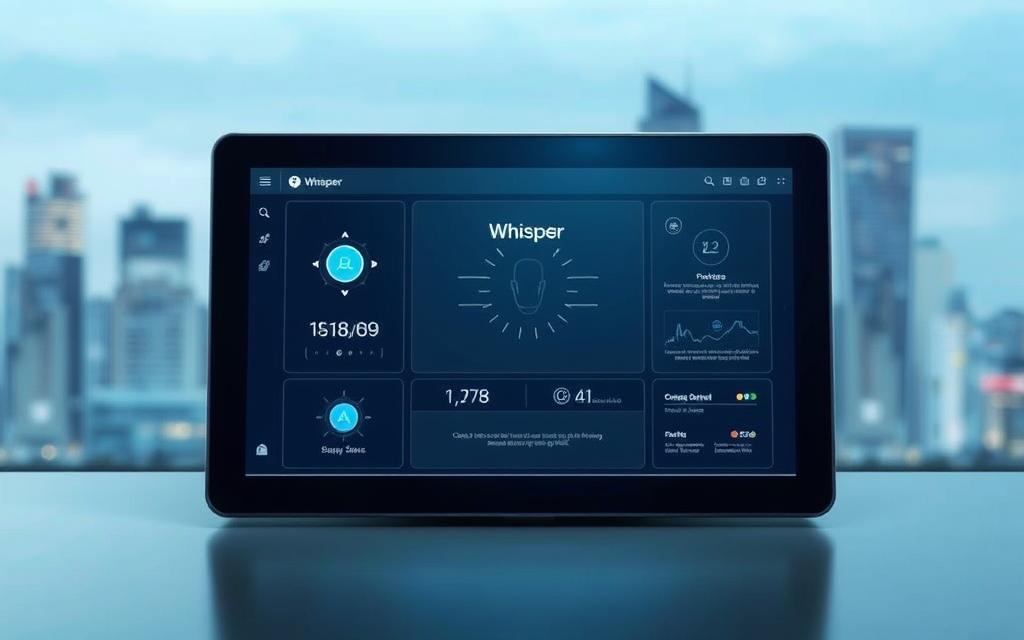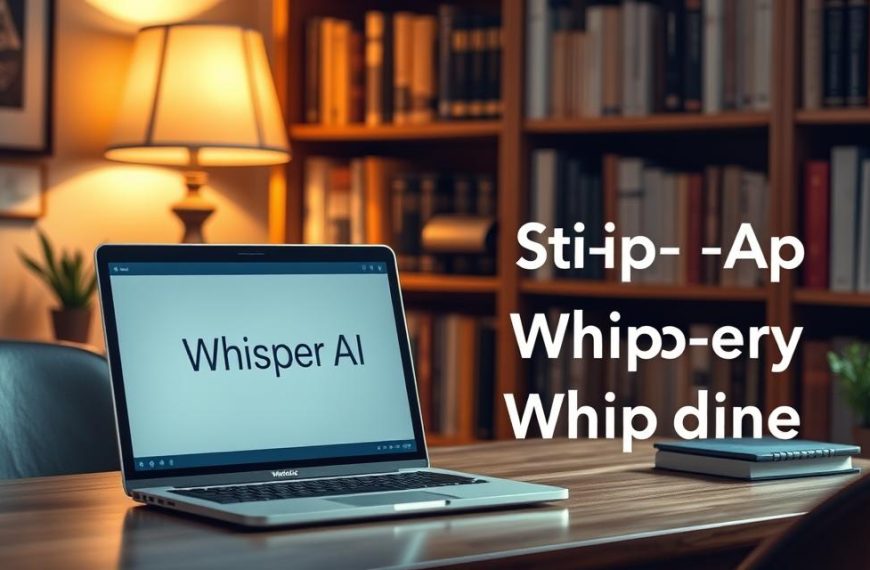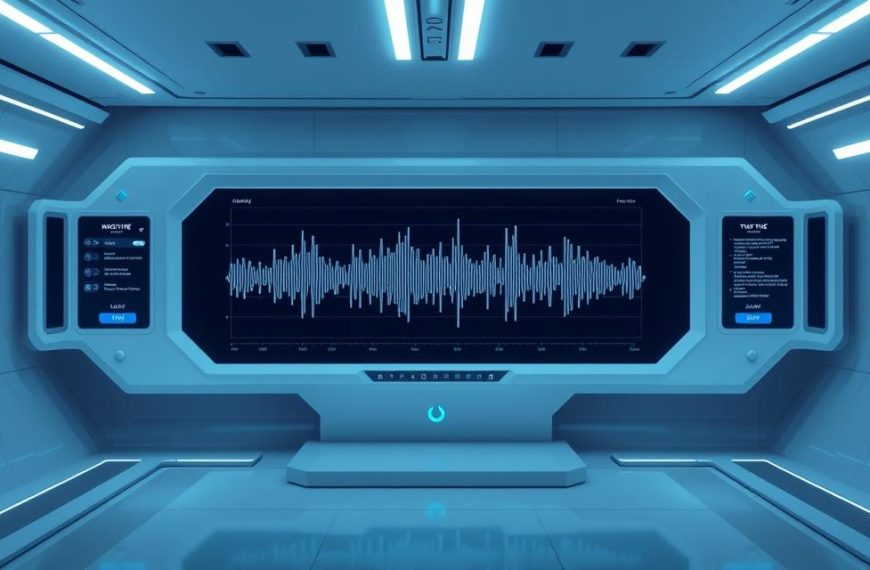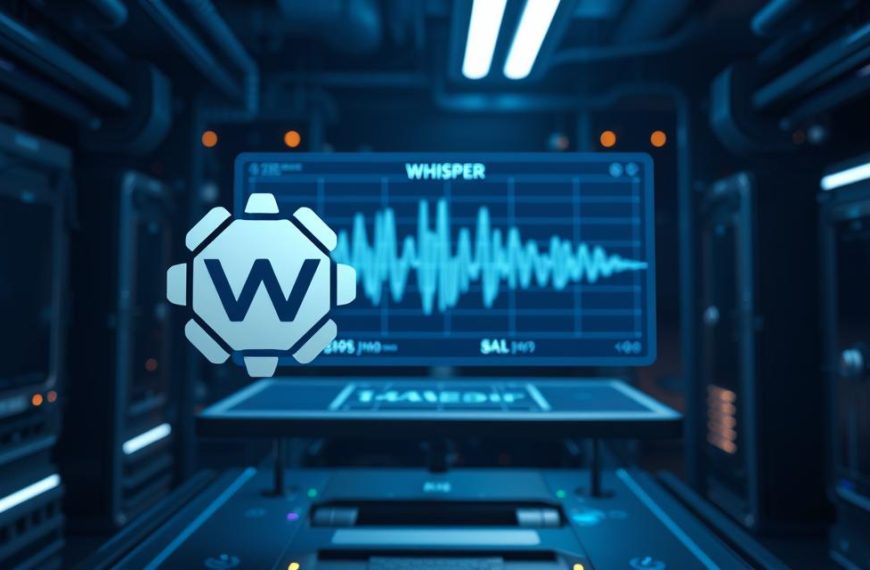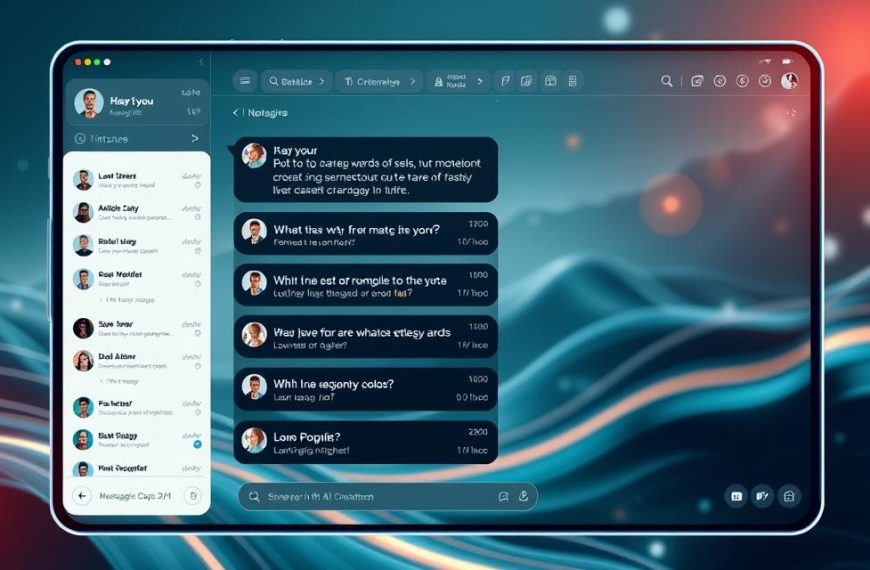Many users are curious about OpenAI’s speech recognition technology. They wonder if it comes with hidden charges.
OpenAI has made their openai whisper model open-source. This means researchers and developers can use it for free.
But, using it in real-world applications can be different. Commercial use and large-scale projects might have their own transcription cost.
It’s important to understand these differences. This is true for both businesses and individuals who want to use this advanced speech recognition tool. We will look into these details further.
What is OpenAI’s Whisper AI?
OpenAI’s Whisper AI is a big step forward in speech recognition. It’s making waves in many industries. This AI can turn spoken words into written text very accurately. It’s a big help for lots of uses.
Overview of the Whisper Model
The Whisper model uses a special architecture. It’s a Transformer, which is the latest in speech processing. This design lets it handle complex audio and produce accurate text.
OpenAI trained Whisper on a huge amount of data. This training helps it pick up on speech patterns and nuances. Its big training makes it work well in many situations.
Key Features and Capabilities
Whisper AI has a wide range of features. It’s very good at many things, from simple dictation to complex multilingual tasks. It does everything well.
Speech Recognition and Transcription
The main strength of this free AI model is its speech recognition. Whisper turns spoken words into text very well, even in tough conditions. It works with different accents, noises, and speeds.
It keeps its high transcription quality, even with these challenges. This makes it great for professional use where accuracy is key.
Multilingual and Cross-Lingual Support
Whisper supports 99 languages, making it global. It’s perfect for international businesses and projects. It can also recognize and process speech in one language and write it in another.
This is super useful for international meetings, creating content in many languages, and global business. It helps break down language barriers.
| Language Family | Number of Languages Supported | Primary Regions Covered | Special Features |
|---|---|---|---|
| European Languages | 38 | Europe, Americas, Oceania | Accent recognition for major dialects |
| Asian Languages | 29 | East Asia, South Asia, Southeast Asia | Tone recognition for tonal languages |
| African Languages | 19 | Sub-Saharan Africa, North Africa | Dialect variation handling |
| Other World Languages | 13 | Middle East, Pacific Islands, Indigenous | Low-resource language support |
When looking at Whisper API pricing, the free tier is very good. It handles many languages well. Its design ensures quality results, even with complex tasks.
Whisper’s advanced technology and big data training make it understand context and speaker intent. It produces natural-sounding transcriptions. This makes it very useful for content creators, teachers, and businesses.
Whisper AI Pricing Structure Explained
Understanding Whisper AI’s costs is key to making smart choices. The pricing model is flexible, based on your tech skills and business needs.
Free Tier Access Details
OpenAI lets developers use Whisper’s models for free. You can download and run it locally without paying. This gives you full control over how you use it.
But, there are hidden costs. You’ll need strong hardware to run it well. The model needs powerful GPUs and lots of computing power for good audio processing.
Choosing the free route means you need skilled developers. They’ll handle setup, upkeep, and tweaks.
Paid Pricing Plans and Options
If you prefer a managed service, OpenAI has a direct API access. This means no need for expensive hardware and easier setup.
Cost per API Call
The Whisper API costs $0.006 per minute of audio. This makes planning your budget easy, no matter the project size.
Other services using Whisper might charge differently. They might offer better interfaces, extra features, or support.
Big businesses can look into custom enterprise solutions. These include discounts, dedicated support, and agreements.
These solutions often have better security and meet legal standards. They’re for companies needing reliable speech-to-text services on a large scale.
Custom solutions might also train the model for specific words. This boosts accuracy for technical or special vocab.
When looking at enterprise options, compare OpenAI’s offers and third-party services. Each has its own benefits based on your audio needs.
Is Whisper AI Free to Use? Analysing the Fine Print
Using Whisper AI for free comes with certain rules that users need to know before starting. The model itself is free, but other technical and operational factors affect what “free” really means.
Conditions and Limitations of Free Usage
The open-source version of Whisper AI doesn’t cost money to use. But, it has big technical challenges. Users need to provide their own computers, which can be expensive depending on how much transcription they need.
Hardware needs are the main problem for free use. The model needs a lot of power for:
- Real-time audio processing
- Large batch transcription jobs
- High-quality audio files
This means the software is free, but setting up the computers can be very costly for big projects.
Usage Caps and Thresholds
To understand free access, we need to look at both the open-source model and API-based solutions. Each has its own limits that affect how much you can do.
Daily or Monthly Limits
The openai whisper model you host yourself doesn’t have official limits. But, real limits come from how much your computers can do and how much it costs to run them.
For API access through OpenAI’s platform, limits vary by plan. Free plans usually have:
| Feature | Free Tier | Paid Plans | Considerations |
|---|---|---|---|
| Monthly Requests | Limited | Scalable | Varies by plan level |
| Processing Speed | Standard | Priority | Affects turnaround time |
| Concurrent Jobs | Restricted | Expanded | Important for volume processing |
| Audio Length | May have limits | Extended | Critical for long recordings |
So, while trying it out is cheap, using it for real work often means you need to pay.
Data Privacy Considerations
When using services for speech processing, keeping data safe is key. Audio can have private information that needs careful handling.
The open-source version lets you control data privacy best. It works on your own computers, avoiding data leaks. But, it needs a lot of technical knowledge.
API-based solutions send audio to OpenAI’s servers. This raises big questions:
- Data retention policies
- Encryption standards
- Compliance requirements
- Jurisdictional considerations
Groups with sensitive audio need to think if cloud processing is worth the privacy risks. Free AI model access through APIs might not be right for strict data rules.
In the end, Whisper AI is great without direct fees. But, whether it’s truly free depends on how you use it and your technical setup.
Benefits of Utilising Whisper AI
OpenAI’s Whisper AI is a standout in speech recognition tech. It’s easy to use and packed with advanced features. These benefits are clear in many areas.
Cost Savings for Startups and Developers
For new businesses and solo developers, Whisper is a big money-saver. It’s free to use, which means no extra costs for multilingual transcription.
Startups can focus on their main work, not on pricey speech-to-text services. This lets small teams keep up with big companies, even with less money.
The clear whisper api pricing helps plan budgets better. You can grow your use without worrying about hidden costs, unlike with some other services.
Scalability and Integration Advantages
Whisper grows easily from small tests to big projects. It handles more work without needing big changes.
It’s also easy to fit into different systems. You can use it through:
- Direct API connections for cloud-based processing
- Local deployment for better security
- Custom tweaks for special needs
- Works with many programming tools
This makes Whisper great for many uses, from schools to big companies. It adapts to your project’s needs, not the other way around.
Companies like how Whisper keeps working well as it grows. It handles lots of audio files every day without a hitch.
Drawbacks and Considerations for Free Users
Whisper AI’s free access is a big plus, but users need to know the downsides. These issues are more noticeable when you’re growing your operations or need top-notch reliability.
Performance and Reliability Issues
The free version of Whisper AI has technical limits that affect how well it works. It can only handle files up to 25MB and audio clips up to 30 seconds. This makes it hard for longer recordings.
Free users can’t get real-time transcription. They have to wait until the audio is done before it can be transcribed. This delay is a problem for those who need quick results.
Also, the model sometimes makes mistakes by adding text that doesn’t match the audio. This usually happens with low-quality recordings or unusual accents.
Lack of Premium Support
Free users get Whisper AI without help from experts or service agreements. They have to fix problems themselves using forums and guides. This is okay for tech-savvy users but tough for others.
Businesses usually get fast support and guaranteed help with premium services. The free version doesn’t offer this, which is a big issue for companies needing reliable speech recognition.
There’s no professional help for custom features or special needs. Users can’t ask for specific improvements for their audio processing tasks. This might be a problem for businesses with unique needs.
Comparing Whisper AI with Alternative Speech-to-Text Services
When looking at speech recognition solutions, it’s key to compare OpenAI’s Whisper AI with other well-known services. This helps find the best match for your needs and budget.
Whisper AI vs Google Cloud Speech-to-Text
Pricing Comparison
Google’s speech-to-text services charge per minute of audio processed. This is different from Whisper AI, which is free for basic use. For big projects, Google’s costs can add up fast, compared to OpenAI’s more affordable prices.
Accuracy and Language Coverage
Both services have high accuracy rates. Google’s service has more training data for different accents and dialects. Whisper AI supports almost 100 languages, while Google covers about 120 languages and variants. Your choice depends on your language and accent needs.
Whisper AI vs Microsoft Azure Speech Services
Feature and Cost Analysis
Microsoft Azure has a wide range of speech services with top features. Their prices are based on monthly usage hours. Whisper AI is a good choice for free solutions, perfect for testing and small projects.
Ease of Implementation
Azure has lots of documentation and SDK support for many programming languages. Whisper AI’s API is simple to use. Both offer great options, but Whisper AI’s open-source nature means you can customize it more.
Practical Applications and Use Cases
Whisper AI does more than just recognise voices. It offers big changes in many fields. Its flexibility is key for companies looking for audio processing that grows with them.
Business and Educational Implementations
In the workplace, Whisper AI boosts productivity and makes things easier. It’s used in customer service to:
- Keep accurate records of calls
- Summarise meetings quickly for CRM
- Provide captions for virtual conferences
- Help with recording and analysis
Schools use Whisper to make learning better for everyone. It helps with:
- Transcribing lectures for students
- Improving language skills with feedback
- Analysing research interviews
- Adding subtitles to educational videos
Media companies use Whisper to make content creation faster. Its strong multilingual transcription is great for global media.
Real-World Examples and Success Stories
Many companies have made Whisper AI work for them. A big customer service team saw:
“A 40% cut in documentation time and better accuracy in customer records.”
Language learning apps have also seen big improvements. One app reported:
“A 60% boost in student engagement with Whisper’s pronunciation feedback.”
Media production has also gotten better with Whisper. A documentary team said:
“Whisper cut our subtitle time by 75% and kept accuracy high in many languages.”
These stories show Whisper AI’s role in enterprise solutions. It’s flexible and cost-effective, helping companies in many ways.
CRM platforms use Whisper for meeting summaries and tasks. This helps sales teams a lot, saving them from writing notes by hand.
Whisper’s growing use across industries shows its value. As more find out about it, we’ll see even more uses in the future.
Conclusion
OpenAI Whisper is a top-notch speech recognition tool with both free and paid options. The open-source model is free but needs technical skills to use. The Whisper API pricing offers scalable paid plans for those who want ease.
Deciding between the free and paid Whisper options depends on your needs. Think about your technical skills, budget, and project size. Small tasks might fit the free model, while bigger projects could need the paid API’s reliability.
Good speech recognition tech can change how you handle audio. Whether you pick the free model or the paid API, Whisper works well in many languages. Choose wisely based on your project’s needs.

